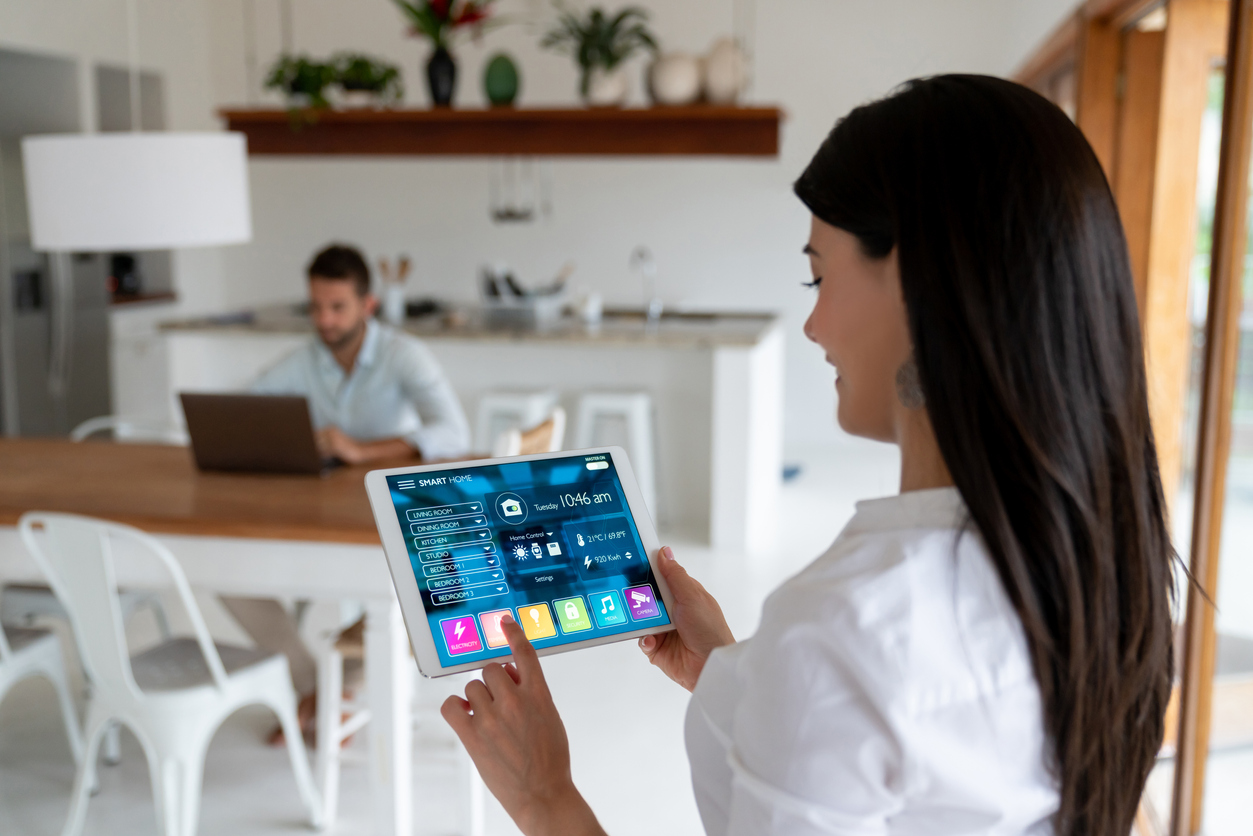It used to be only superheroes and spacemen who could talk to their room (or starship) and have the computer understand what they said and respond accordingly. Now, the smart home has gone from science fiction to interesting novelty to hardly remarkable.
Nearly four out of 10 people now have some form of smart home, ranging from one voice-activated device to an entire house connected to the phone. It is only a matter of time before smart houses become the norm, leaving “old-fashioned” disconnected homes in the dust. Needless to say, the impact of this trend will be far reaching.
Tracking and Monitoring
Aside from playing a favorite tune or searching facts to settle a bet, smart homes are being used for more practical uses, ranging from turning lights on and off, locking the doors, and even monitoring the performance of certain appliances. Heating and cooling can be controlled from the phone, from anywhere, and now it’s possible to look up whether or not the stove was left on – and then to turn it off. All of this information is digitally available and is leading to increased security and, eventually, to higher expectations concerning the status of the utilities.
Impact on the Insurance Business
The impact on the insurance business has not been truly felt, but it is only a matter of time. With the ability to track the health of the home in real-time, ranging from the lifespan of the refrigerator to a leak in the gas line, more precise information has never been available.
With such information, insurance companies will be able to evaluate the safety and risk of a home before issuing a policy and even to write customizable policies for each client. This is also likely to increase the demand for smart homes so that customers can work to reduce their premiums, and it is not unreasonable to imagine policies that require certain smart home features. The future of insurance may just be reduced premiums, higher security, and early alerts to when something is wrong in the home.
Challenges Moving Forward
These trends are likely to continue – the use of smart homes is expected to increase 31 percent through 2020 in America, and 54 percent in Europe. But the transition period will be difficult.
Some companies may be reluctant to allow smart devices to access their products. And of course, there is the ever-present concern over privacy and security. Homeowners may not like the idea of their insurance company tracking their lives in such detail.
Loss of data may not be the problem so much as concerns over inviting the insurance folks into the house, so to speak. These issues will need to be resolved because the technology does not seem likely to go away any time soon.













